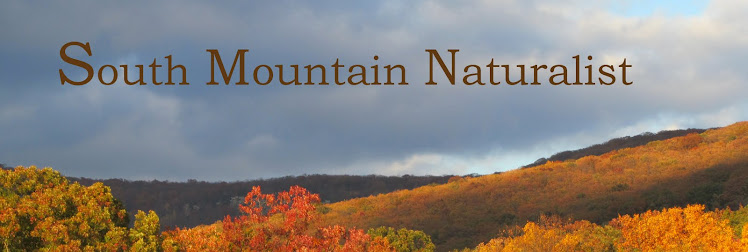Amidst patches of ice in a marshy area of Greenbrier State Park, the Skunk Cabbage (Symplocarpus foetidis) is flowering when I visit on February 16, 2011. This is one of my favorite plants because it is so unique.
Emerging so early in spring means the plant needs a way to withstand the lingering cold and potential snows. The plant stores carbohydrates in its large root system. The increased respiration that occurs during new growth enables it to burn these carbs and produce heat--at times enough to melt the snow and ice that may be surrounding it!
Skunk Cabbage blossoms before its large leaves show their tips. A mottled ear-like form called a spathe emerges. Its color ranges from green to purple. Within the spathe is a globular spadix, where the tiny flowers extend like pins on a pin cushion. The temperature within the spathe may be as much as to 27 degrees (F) above the outside air.
Skunk Cabbage emits a foetid odor. Plants that smell disagreeable to us are usually pollinated by insects that are drawn to the scent of decomposing material. Small gnats and flies emerge around the same time as the Skunk Cabbage and frequent the same habitat. They buzz from spathe to spathe to sip the nectar on the tiny flowers, thereby spreading pollen and enabling the plant's reproductive cycle. Larger insects may be able to squeeze their way into the spathe but then can find themselves too large to exit the opening, and become trapped.
The leaves of the Skunk Cabbage push out of the ground in a tightly wrapped cone, and grow quickly, each plant soon covering more ground than can be encircled with your arms. By June this site will be thick with Skunk Cabbage and waist high with arching fronds of Cinnamon Fern.







No comments:
Post a Comment